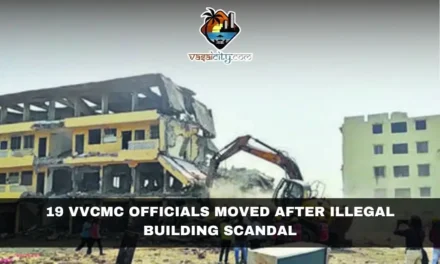The Virar-Vasai locals are known for being overcrowded, often leaving passengers from Mira-Bhayander struggling to find a spot on the trains. The situation has been a significant challenge for commuters, with limited local train services starting from Bhayander, adding to the frustration of those living in the Mira-Bhayander area.
In response to the growing demand for better connectivity, there has been a long-standing request from the residents of Mira-Bhayander for the extension of the Mumbai Metro to their region. The idea was to provide a viable alternative to the congested local trains. Recognizing the need, the then Chief Minister of Maharashtra, Devendra Fadnavis, approved the project, setting the wheels in motion for what is now known as Metro 9. The construction of this metro line began in 2019, and now, there is hope that the Metro will ease the daily commute by reducing the burden on the already overcrowded Virar locals.
The Mumbai Metro 9 project is designed to connect Dahisar to Mira-Bhayander, offering a new route for commuters. The first phase of this project, which stretches from Dahisar to Kashigaon, is expected to be completed by the end of December 2024. Following this, the second phase, which extends from Kashigaon to Netaji Subhash Chandra Bose Ground, is slated to open by December 2025. The completion of these phases is highly anticipated, as it promises to bring significant relief to the daily grind of local train commuters.
As of now, about 87% of the construction work for Metro 9 has been completed. The project is progressing in two distinct phases, with the first phase set to become operational by December 2024. The first phase will cover the stretch from Dahisar to Kashimira, and once operational, it will mark a new era in the public transportation system for residents in this area.
The introduction of Metro 9 will make travel quicker and more convenient for citizens. The metro line will offer a direct link between Gundavli-Andheri and Kashimira in Mira-Bhayander, significantly cutting down travel time. The Maharashtra government has emphasized that the goal of this project is not only to connect Mira-Bhayander to Mumbai but also to simplify the daily commute for the residents of Mira-Bhayander. Moreover, Metro 9 is expected to alleviate the heavy traffic congestion often seen at Dahisar Naka, further enhancing the overall commuting experience.
So, what exactly is the route of Metro 9? The Metro 9 line plays a crucial role in connecting Mumbai’s suburbs with Mira-Bhayander, covering a distance of approximately 10.08 kilometers. The line will include eight stations, with the first station being at Dahisar. The first phase of the project will feature four stations: Dahisar, Pandurang Wadi, Miragaon, and Kashigaon. The second phase, which will open in the following year, will extend further, completing the full route.
This metro line is designed to cater to the needs of the growing population in the Mira-Bhayander area, which has long suffered from limited access to efficient public transportation. With the opening of Metro 9, it is expected that the daily struggle of getting onto an overcrowded local train will become a thing of the past for many commuters. The metro will offer a faster and more comfortable alternative, allowing residents to reach their destinations in a fraction of the time it currently takes.
The benefits of Metro 9 go beyond just reducing the crowd on Virar locals. The line is also expected to bring economic growth to the region by improving accessibility and connectivity. As the metro stations become operational, they are likely to boost local businesses and provide new opportunities for employment, contributing to the overall development of the area. Additionally, the improved transportation network may lead to an increase in property values, making Mira-Bhayander an even more attractive place to live.
Another significant advantage of Metro 9 is the environmental impact. With more people opting for the metro instead of personal vehicles or overcrowded trains, there will be a reduction in traffic congestion and vehicle emissions. This shift to a more sustainable mode of transportation aligns with the broader goals of reducing pollution and promoting greener alternatives in urban areas.
As the project nears completion, the anticipation among residents is palpable. Many are eagerly waiting for the day when they can finally say goodbye to the daily struggle of catching a local train. The successful implementation of Metro 9 will mark a significant milestone in Mumbai’s public transportation history, providing a much-needed solution to one of the city’s most pressing problems.
In conclusion, the Mumbai Metro 9 project is set to bring about a significant change in the way people commute in the Virar-Vasai and Mira-Bhayander regions. With the first phase expected to be operational by December 2024, and the second phase by December 2025, residents can look forward to a future where their daily commute is less stressful and more efficient. The introduction of this metro line will not only reduce the crowd on the Virar locals but also contribute to the overall development of the region, making it a win-win situation for all.









